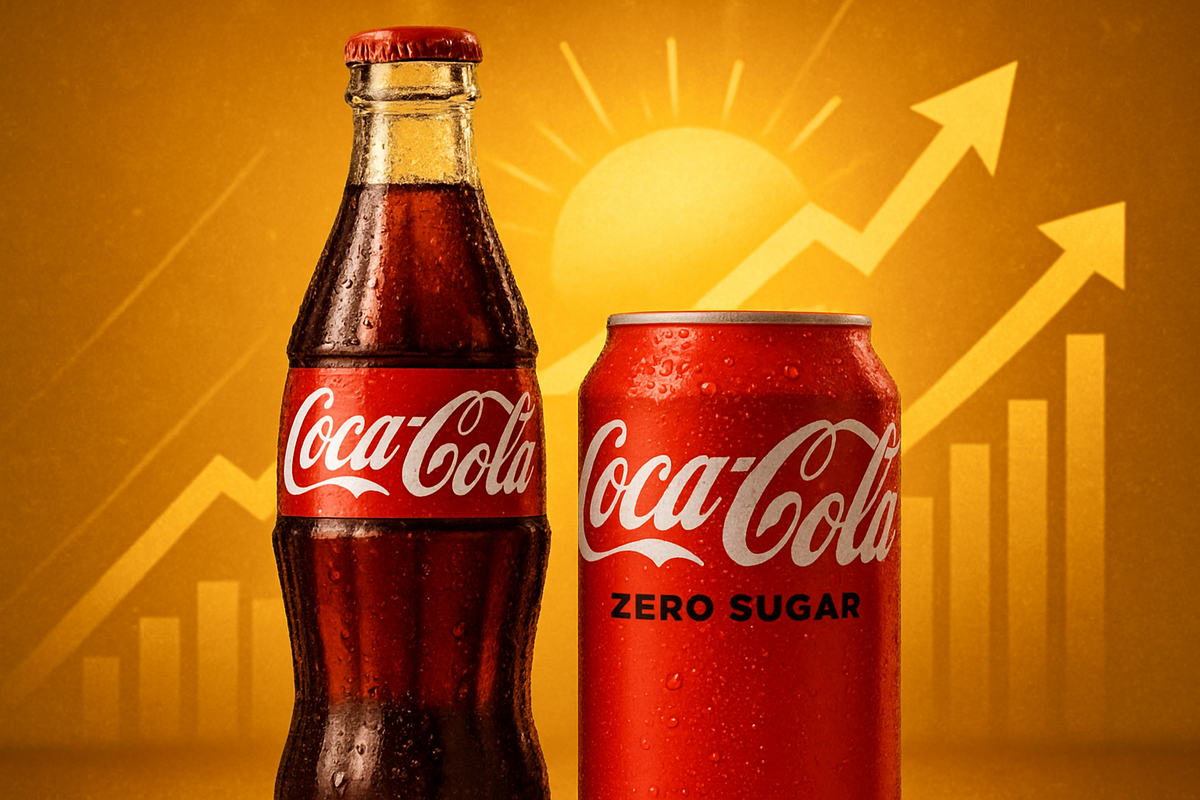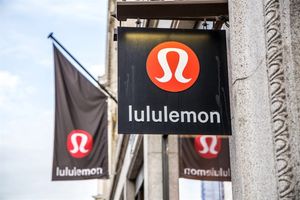Financial News
Coca-Cola's Sparkling Q3 Fuels Dow to New Record High

New York, NY – October 21, 2025 – The Coca-Cola Company (NYSE: KO) today delivered a robust third-quarter earnings report that not only surpassed Wall Street expectations but also provided a significant uplift to the broader market, propelling the Dow Jones Industrial Average to an unprecedented record high. This stellar performance from the beverage giant signals enduring consumer demand and effective strategic execution, offering a refreshing narrative amidst varied economic signals. The strong results underscore the resilience of established consumer staple brands and their critical role in anchoring market stability and growth.
The positive momentum generated by Coca-Cola’s financial disclosures sent ripples of optimism across trading floors. As investors digested the impressive figures, shares of Coca-Cola surged, contributing a substantial boost to the blue-chip index. This event highlights how strong individual corporate performances, particularly from a Dow component as influential as Coca-Cola, can act as powerful catalysts for market-wide rallies, reassuring investors about the underlying health of key sectors.
A Sweet Victory: Detailed Earnings Unpacked
The Coca-Cola Company (NYSE: KO) announced net revenues of $12.5 billion for the third quarter of 2025, marking a 5% increase year-over-year and comfortably exceeding the consensus forecast of $12.41 billion. This growth was primarily driven by a robust 6% increase in price/mix, demonstrating the company's pricing power and brand strength, even as concentrate sales remained flat. Organic revenues, a key metric for evaluating underlying business health, climbed an even more impressive 6%.
Profitability metrics also painted a strong picture, with GAAP earnings per share (EPS) soaring 30% to $0.86. On a comparable (non-GAAP) basis, EPS rose 6% to $0.82, outperforming analyst estimates of $0.78, extending Coca-Cola's remarkable streak of beating bottom-line expectations for at least 21 consecutive quarters. Operating income experienced a significant surge of 59%, with comparable currency-neutral operating income increasing by 15%. The operating margin expanded dramatically to 32.0% from 21.2% in the prior year, a testament to effective cost management and the benefits of organic revenue growth, despite increased marketing investments and currency headwinds.
Global unit case volume grew by 1%, a notable turnaround from previous quarters and an indication of revitalized consumer engagement. This growth was particularly strong in key segments, with Coca-Cola Zero Sugar volume increasing by 14% and sports drinks by 3%. The company also continued to gain value share in the total non-alcoholic ready-to-drink beverage category. Looking ahead, Coca-Cola reiterated its full-year 2025 guidance, projecting organic revenue growth of 5% to 6% and comparable currency-neutral EPS growth of approximately 8%, alongside an expectation of generating at least $9.8 billion in free cash flow, excluding a specific contingent consideration payment. Following the announcement, KO's stock responded enthusiastically, climbing between 3.73% to 4.1% to reach $71.00 per share, significantly contributing to the Dow Jones Industrial Average's rise of over 200 points to a new all-time high on October 21, 2025.
Market Movers: Who Wins and Who Faces the Challenge?
The immediate winner in this scenario is unequivocally The Coca-Cola Company (NYSE: KO) itself. The strong earnings report validates its strategic initiatives, including product innovation, effective pricing strategies, and ongoing refranchising efforts. The significant jump in its stock price not only rewards shareholders but also strengthens the company's market capitalization and investor confidence. This performance bolsters Coca-Cola's position as a leading global beverage powerhouse, providing it with increased financial flexibility for future investments, acquisitions, or shareholder returns.
For its direct competitors, such as PepsiCo (NASDAQ: PEP) and Keurig Dr Pepper (NASDAQ: KDP), Coca-Cola's robust performance presents both a challenge and a potential positive read-through. While it sets a high bar for their upcoming earnings, it also signals a healthy consumer environment for non-alcoholic beverages. Competitors might face pressure to demonstrate similar growth metrics or innovative strategies to maintain their market share and investor appeal. However, a rising tide lifts all boats, and strong consumer staples demand could benefit the entire sector, potentially leading to increased investor interest in beverage companies across the board. Furthermore, companies involved in Coca-Cola's supply chain—from ingredient suppliers to packaging manufacturers and logistics providers—could see indirect benefits from the beverage giant's sustained growth and increased production volumes.
Broader Implications: A Bellwether for Consumer Strength
Coca-Cola's stellar Q3 2025 performance is more than just an individual company's success story; it serves as a significant bellwether for the broader consumer staples industry and the resilience of consumer spending. In an economic environment often characterized by fluctuating consumer confidence and inflationary pressures, Coca-Cola's ability to drive both revenue and profit growth, largely through effective pricing and increased volume in key segments, suggests that consumers are still willing to spend on established, trusted brands. This trend fits into broader industry patterns where strong brand equity often translates into pricing power, allowing companies to navigate cost increases without severely impacting demand.
The ripple effects of Coca-Cola's success are likely to extend beyond the beverage sector. Its strong results could signal renewed optimism for other consumer staples companies, suggesting that defensive sectors can still deliver growth even when broader economic growth is uneven. This might encourage investors to reallocate capital towards companies with stable cash flows and strong brand recognition. Historically, consumer staples perform well during periods of economic uncertainty due to their non-discretionary nature, but Coca-Cola's report demonstrates that these companies can also thrive during growth cycles. There are no immediate significant regulatory or policy implications from this specific earnings report, but sustained strong performance across the industry could draw attention to aspects like sugar content, packaging sustainability, and market dominance, which are ongoing concerns for the food and beverage sector. This event provides a positive comparison to similar instances where strong earnings from market leaders have ignited broader market rallies, reinforcing the idea that corporate fundamentals remain a crucial driver of market performance.
The Road Ahead: Sustaining the Sparkle
In the short term, Coca-Cola's strong Q3 results are likely to maintain positive investor sentiment, potentially leading to continued upward pressure on its stock and a generally favorable outlook for the consumer staples sector. The company's reiterated full-year guidance suggests confidence in sustaining this momentum through the end of 2025. Investors will be closely watching for continued volume growth, especially in emerging markets, and the performance of its innovation pipeline, particularly in low-sugar and functional beverages. Strategic pivots may involve further investments in digital transformation and e-commerce capabilities to meet evolving consumer purchasing habits.
Longer-term, Coca-Cola faces both opportunities and challenges. The global demand for non-alcoholic beverages is expected to continue growing, offering significant market opportunities, especially in developing economies. However, shifting consumer preferences towards healthier options, increased competition from smaller, agile brands, and ongoing sustainability concerns regarding packaging will require continuous adaptation and innovation. Potential strategic adaptations could include further diversification of its product portfolio, aggressive expansion into new beverage categories, and continued optimization of its global bottling system. Market challenges might emerge from persistent inflationary pressures impacting input costs or potential changes in consumer spending patterns if broader economic conditions deteriorate. Scenarios range from continued steady growth, driven by brand strength and strategic execution, to periods of increased competition and the need for more aggressive innovation to maintain market leadership.
Conclusion: A Refreshing Outlook for the Market
The Coca-Cola Company's (NYSE: KO) exceptional third-quarter 2025 earnings report has not only solidified its position as a market leader but has also played a pivotal role in propelling the Dow Jones Industrial Average to a new record high on October 21, 2025. The key takeaways from this event are clear: strong brand equity and effective strategic management continue to drive significant financial performance, even in a dynamic economic landscape. Coca-Cola's ability to achieve robust revenue growth through pricing power and volume increases, coupled with significant operating margin expansion, underscores the enduring strength of the consumer staples sector.
Moving forward, the market can view this performance as a positive indicator of consumer resilience and a potential catalyst for broader market optimism. While individual company performance is always subject to unique factors, Coca-Cola's results provide a reassuring signal about the health of foundational consumer demand. Investors should continue to monitor Coca-Cola's execution on its guidance, particularly its ability to manage currency headwinds and sustain volume growth across its diverse portfolio. Furthermore, watching for similar strong reports from other bellwether companies will be crucial in assessing the overall trajectory of the market in the coming months. The enduring strength of iconic brands like Coca-Cola remains a cornerstone of market stability and growth, offering a refreshing outlook for investors navigating the complexities of the global financial landscape.
This content is intended for informational purposes only and is not financial advice
More News
View More




Recent Quotes
View More
Quotes delayed at least 20 minutes.
By accessing this page, you agree to the Privacy Policy and Terms Of Service.



